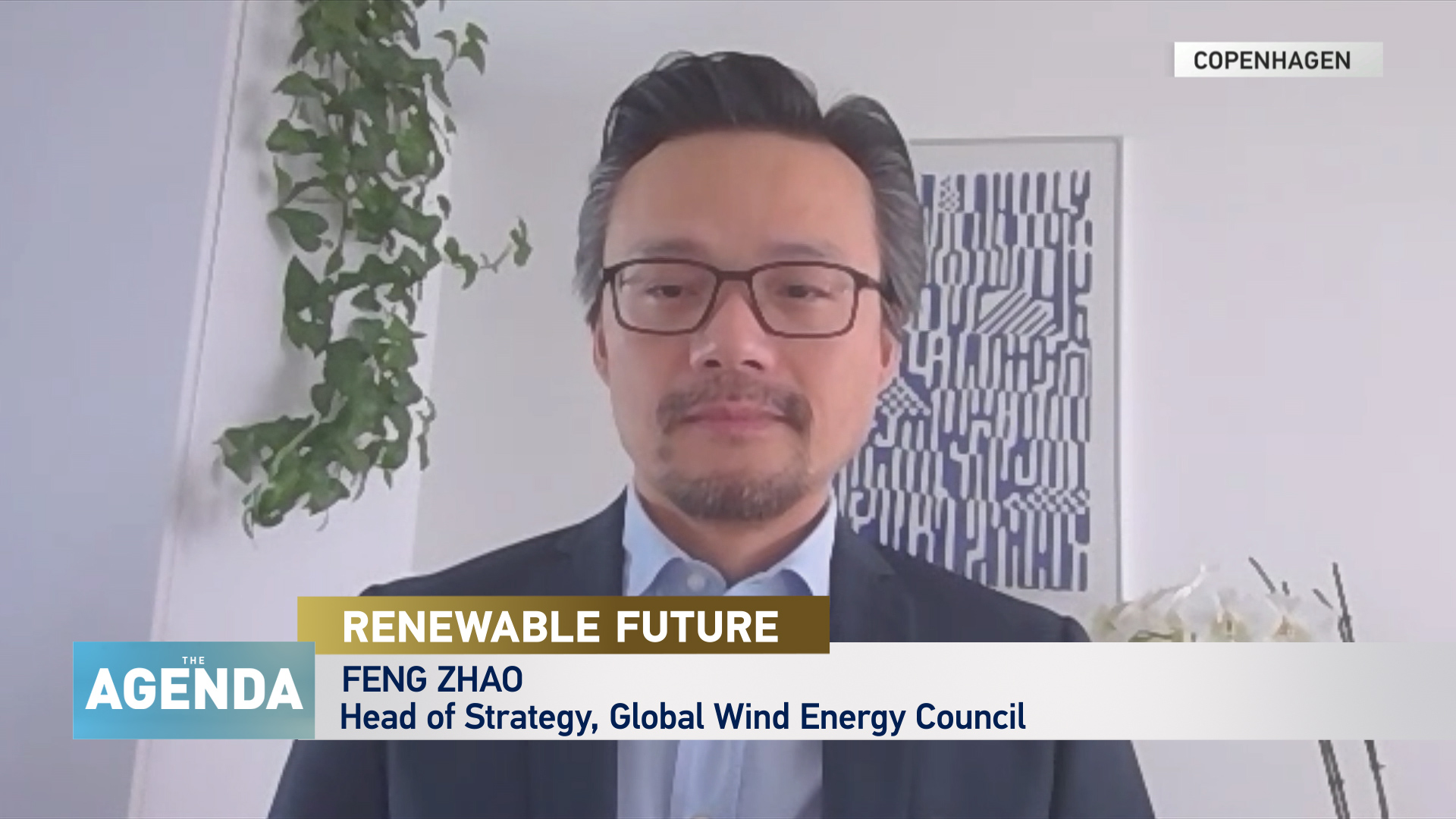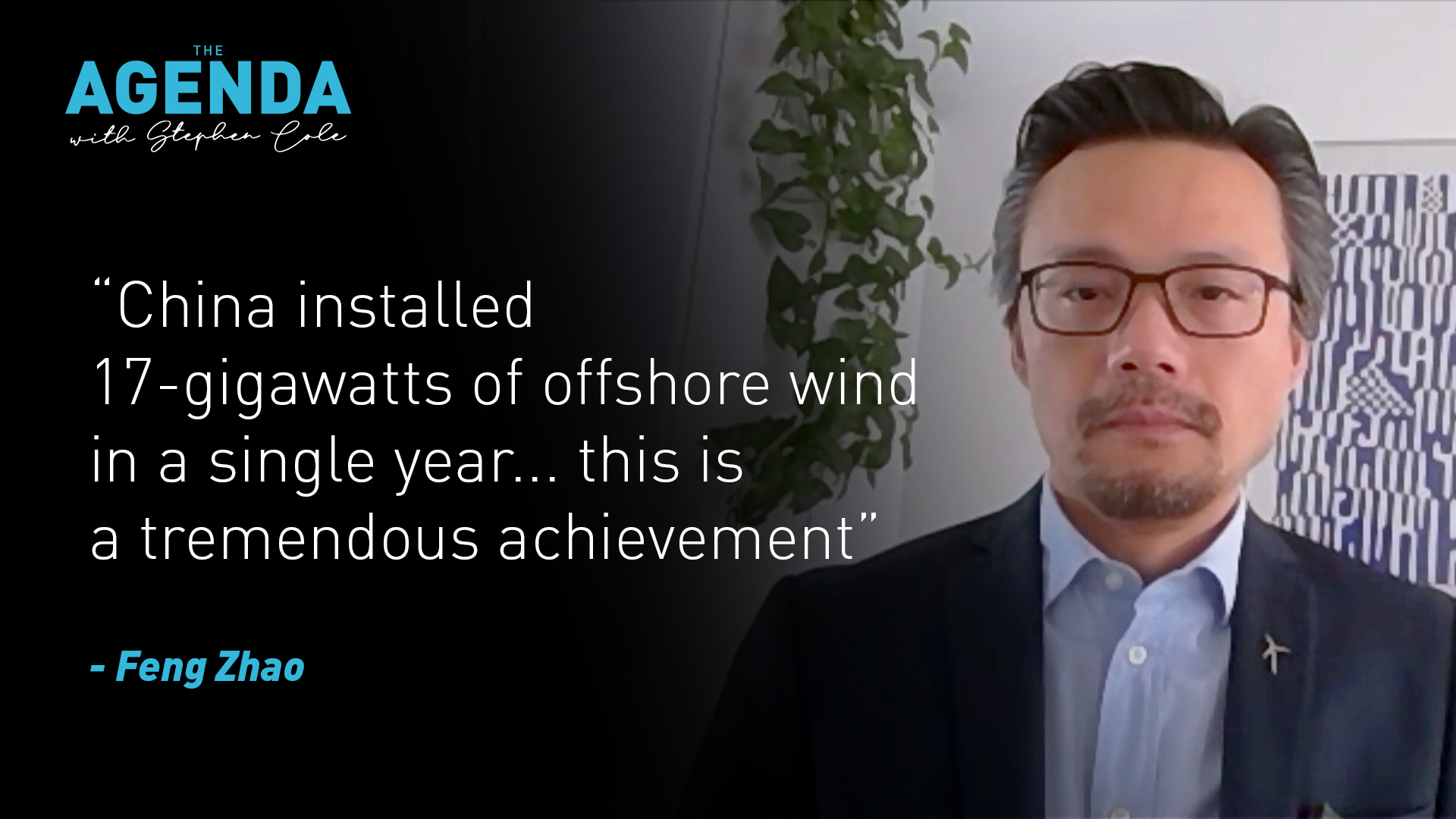06:30

WHAT'S THE ISSUE?
2021 was a record-breaking year for wind and solar energy, which powered a tenth of the world's electricity for the very first time. The amount of power generated from solar rose 23 percent, with wind seeing a 14% rise.
In fact, China was responsible for building more than half of the world's new wind power capacity. But whilst the green movement progressed, strong demand saw coal consumption also increasing.
In order to replace coal and reduce global emissions, the wind and solar transition requires very high year-on-year growth rates.
To find out just how feasible that is, The Agenda's Stephen Cole is joined by Feng Zhao.

MEET THE EXPERT:
Feng Zhao is Head of Strategy and Market Intelligence at the Global Wind Energy Council. Prior to his current role, Feng was a Senior Director and the Head of Wind Energy at FTI Consulting Economics and Financial Consulting Practice, as well as Research Director at the wind energy consultancy, BTM Consult.
Since 2007, Feng has co-authored the World Market Update and the Supply Chain Assessment for the international wind power industry.
Feng holds a master's degree in Economics and Administration from Roskilde University, Denmark.

WHAT DOES FENG SAY?
Asked about the success of China's wind power program, Feng says the industry is watching closely: "China is the largest component and turbine manufacturing hub and this really helped and that's why China became the largest market since 2010.
"In 2021, 17 gigawatts of offshore wind was built in a single year – that would take nearly three decades for the European Market to achieve."
Of course, turbines are reliant on wind. Asked what the solution is when the wind doesn't blow, Feng admits that calm weather exposes wind power's vulnerability:
"As much as we would like to have the wind blow every single minute…sometimes, when the wind doesn't blow, we can balance the grid with the support from natural gas.
"Moving forward, we do need to continue to build the infrastructure and more technology."


ALSO ON THE AGENDA:
- Director General of the World Nuclear Association, Sama Bilbao y Leon discusses why nuclear is still viewed as a dirty word in the renewable energy sector.
- Kingsmill Bond, Energy strategist at the Rocky Mountain institute explains the real cost of going green, and why short-term infrastructure prices outweigh the cost of inaction longer term.

